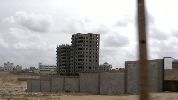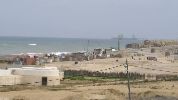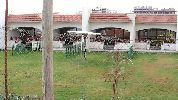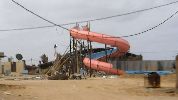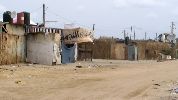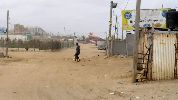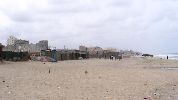Visiting Gaza
16. May 2010 - 26. May 2010A report by Peter Voss, part 2
Mouse click to enlarge photos, Alt + 'left arrow' to return
 We
continued towards the next intersection (3). This is an area where a
lot of destruction had taken place. Some of that is still visible. We
continued towards the next intersection (3). This is an area where a
lot of destruction had taken place. Some of that is still visible.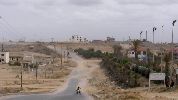 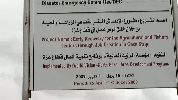 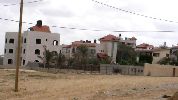 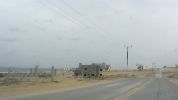 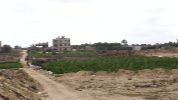 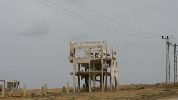 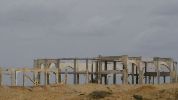 I wanted to go as far 'north' as possible, but after a short stretch the taxi driver stopped (4) and by telling me "boom boom" indicated that he definitely had no intentions of driving any further. As one can see on the 'no-go map' we were pretty close to the former settlement no-go zone. 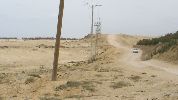 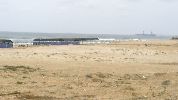 The right photo shows vaguely the tankship mole of the power station in Ashkelon. We turned around and went back to the intersection and drove up the hill towards Beit Lahiya. 
We came to what used to be a gas filling station. The sign apparently pointed that out even in Hebrew. But the main section of it was a only mountain of rubble. Otherwise along the road there were fenced-in gardens and fields with rows of vegetation that I could not identify. There were many greenhouses in the background. The soil was sandy and it was obvious that the fields were irrigated. 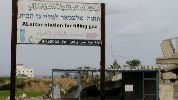 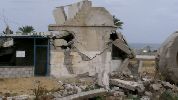 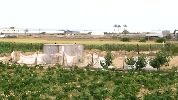 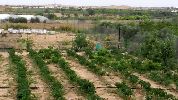 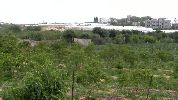 We reached the western outskirts of Beit Lahiya (6), an area that had suffered a lot of damage. At the intersection I got out of the car and filmed the area moving from 'east' to 'south'. The second photo shows a water tank right at the road. There must have been quite some action going on in the seemingly empty space in front. If one looks at the satellite image taken in 2007, one can see that this area was planted with trees.  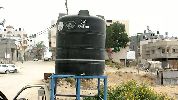 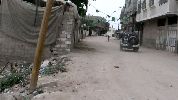
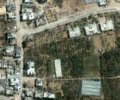  I
still had the urge to drive further 'north'. We drove through the town
out into the open fields (7). Here I had a (very hazy) view of the sea
and again of the mole of the power station and of the power station
south of Ashkelon itself. I
still had the urge to drive further 'north'. We drove through the town
out into the open fields (7). Here I had a (very hazy) view of the sea
and again of the mole of the power station and of the power station
south of Ashkelon itself. 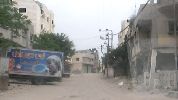 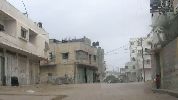 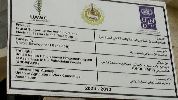 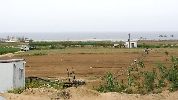 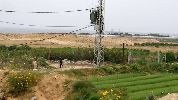 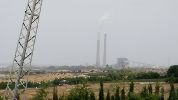 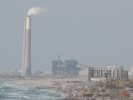 The
photo to the left was taken three days later directly at the coast The
photo to the left was taken three days later directly at the coastWe returned to the intersection and continued downhill towards the main section of Beit Lahiya.  The area looked rather poor. As we were approaching a major intersection, there was a traffic jam caused by a tractor. I got out of the taxi and went up to the intersection, where I noticed a small supermarket. I decided to go inside and look around. I had expected a rather empty store, as I have seen many of them in the Westbank and in the villages in Lebanon. But this store was full. 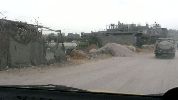 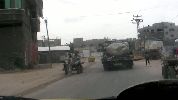 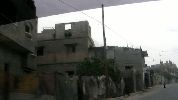 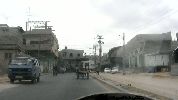 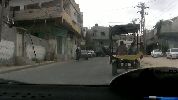 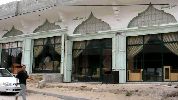 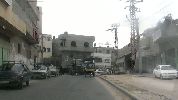 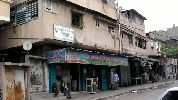 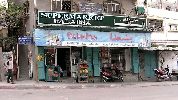 I asked the shopkeeper whether I could film. He agreed to it as long as I did not film him. To my surprise he was quite fluent in English and commented on the food situation as I was filming ( mp3-file, 2:53 Min, 1,4 MB). There will be another occasion in this report to point out that probably close to 100% of the items in the store came through the tunnels from Egypt ( list of goods allowed in from Israel). As I was listening I tried to film the various shelves. When I was later on looking at the video I had the impression that they were filled with what just happened to be available. The canned meat was sitting between canned fruit. The shopkeeper said that he could not get things as he wanted them. This brought back the days of my childhood when especially during the time of the Berlin blockade the children were sent over to the Eastern Zone (because the Western police were controlling the border, which in those days was still open) to buy whatever we could find. The shopkeeper mentioned that hardly anybody can afford to buy a can of corned beef for 7 Shekels ($1 => 3.9 Shekels) when the daily income often is only $1/day (the support of the UN apparently starts when the level goes below $2/day. See also an article in the New York Times/ International Herald Tribune of July 13, 2010). 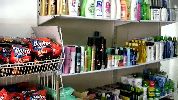 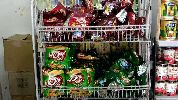 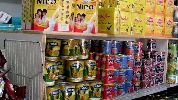 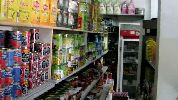 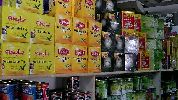 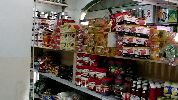 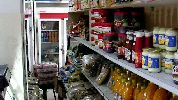 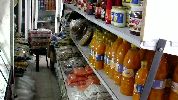 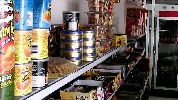 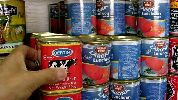 We proceeded in 'north easterly' direction towards the Erez crossing. On the way we passed some modern apartment blocks, some of which had very primitive iron sheeting huts in front of them.  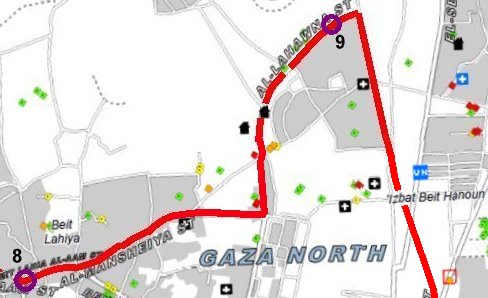 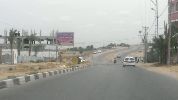
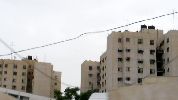 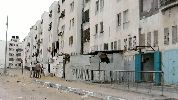 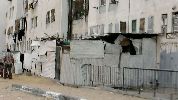 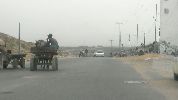  Shortly before we reached the main road going towards Eretz we stopped, because we were right at the edge of the no-go zone and had a view of the wall along the 'northern' border (9). The third photo shows the roof of the Palestian checkpoint on the road to Eretz. 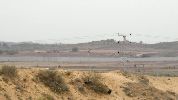 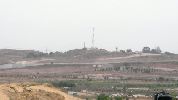 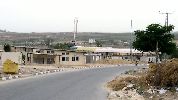 We had to go back to Gaza City because I had an appoinment in the Ministry of Health. As we reached the edge of Gaza City we came past a number of ruins that were not marked on the map. The Ministry is located in center city on one of the major roads, Al Wehda Street. The taxi driver took some of the smaller side streets to get there. The first two photos show one of the places were the rubble from the destroyed buildings is used to produce sinter blocks. The third photo shows on the left side the back of the greeting arch of Beit Hanoun. If the Gaza Freedom March had taken place we probably would have marched along this road on the way to Eretz. 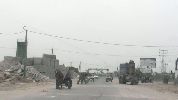 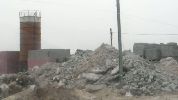 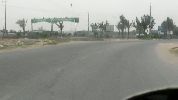 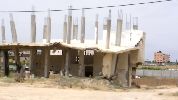 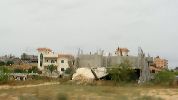 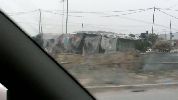 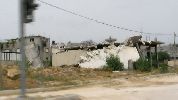 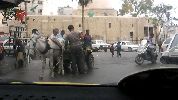 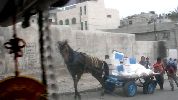 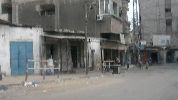 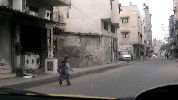 The background for the visit at the Ministry of Health was a conference at Bad Boll in June with the title "Partners for Peace, to talk with Hamas and Fatah" to which the Minister of Health, Basem Naim, was invited. As was to be expected, he did not get a visa for Germany. I went to the ministry in order to see whether there could be a technical solution to this situation. As it turned out, there was no intention to try any of that. Continuation in part 3
Back to contents page
|

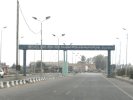

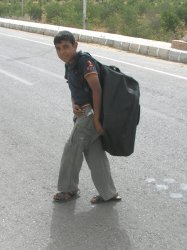
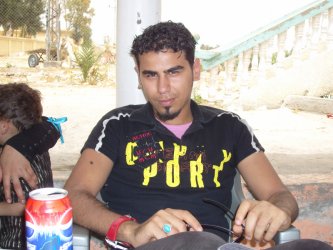
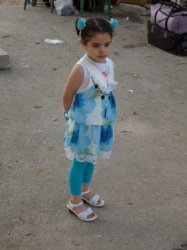
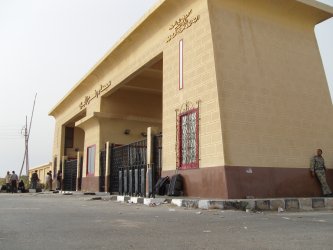
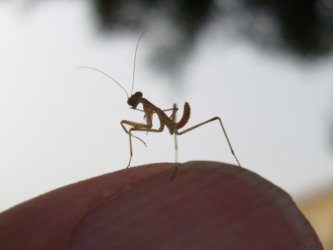
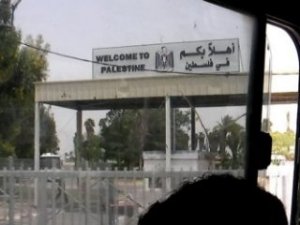
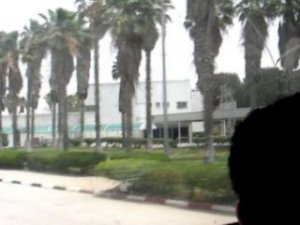
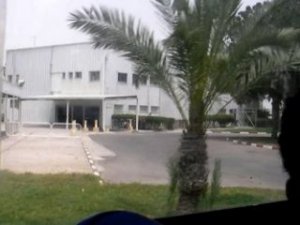
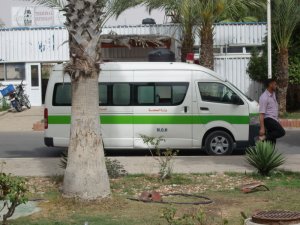
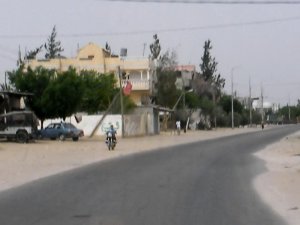
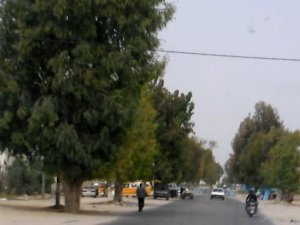
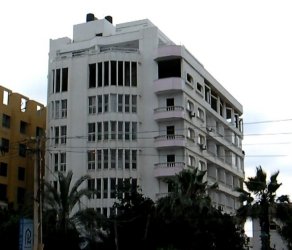
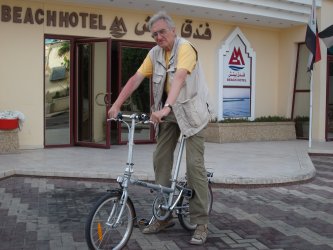


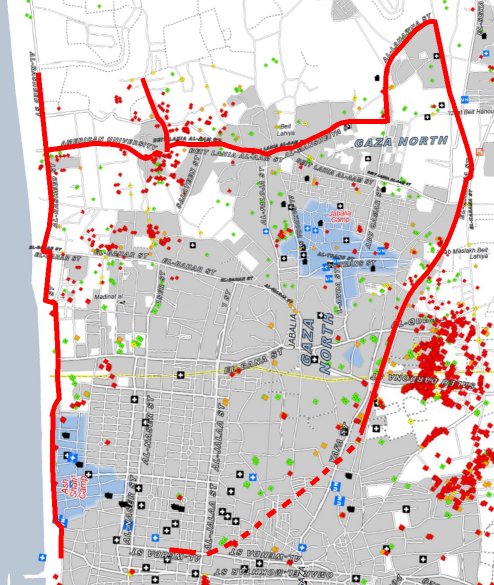
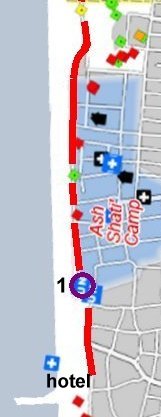 Taking off from the hotel one does not have to
drive very far to reach the first refugee camp in Gaza City, the Beach
Camp. We drove through it, but as I was filming this was a time I had
some footage of the stores at the edge of the camp that sell the
rations that are often marked 'not for sale'.
Taking off from the hotel one does not have to
drive very far to reach the first refugee camp in Gaza City, the Beach
Camp. We drove through it, but as I was filming this was a time I had
some footage of the stores at the edge of the camp that sell the
rations that are often marked 'not for sale'.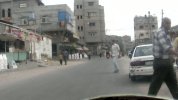
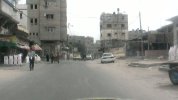
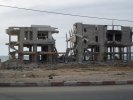
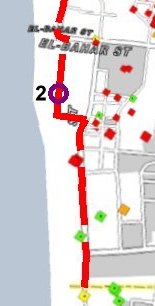
 Behind the camp the landscape was hilly, with a
few luxurious buildings, quite a few high-rise buildings, many of them
apparently never finished. For a stretch there was no beach.
This incidentally is the area where some of the untreated sewage runs
into the sea at the places indicated on the 'no-go map'. As we drove
on, the territory lowered again and the beach continued. We turned off
from the main road in order to get closer to the beach. Close to point
2 on the map there was an idyllic set of vacation row houses with green
lawns in front and a sprinkler running. Otherwise the area looked
rather run down with simple beach cafes and with the remnant
of a children's slide that managed somehow to still stand.
Behind the camp the landscape was hilly, with a
few luxurious buildings, quite a few high-rise buildings, many of them
apparently never finished. For a stretch there was no beach.
This incidentally is the area where some of the untreated sewage runs
into the sea at the places indicated on the 'no-go map'. As we drove
on, the territory lowered again and the beach continued. We turned off
from the main road in order to get closer to the beach. Close to point
2 on the map there was an idyllic set of vacation row houses with green
lawns in front and a sprinkler running. Otherwise the area looked
rather run down with simple beach cafes and with the remnant
of a children's slide that managed somehow to still stand.